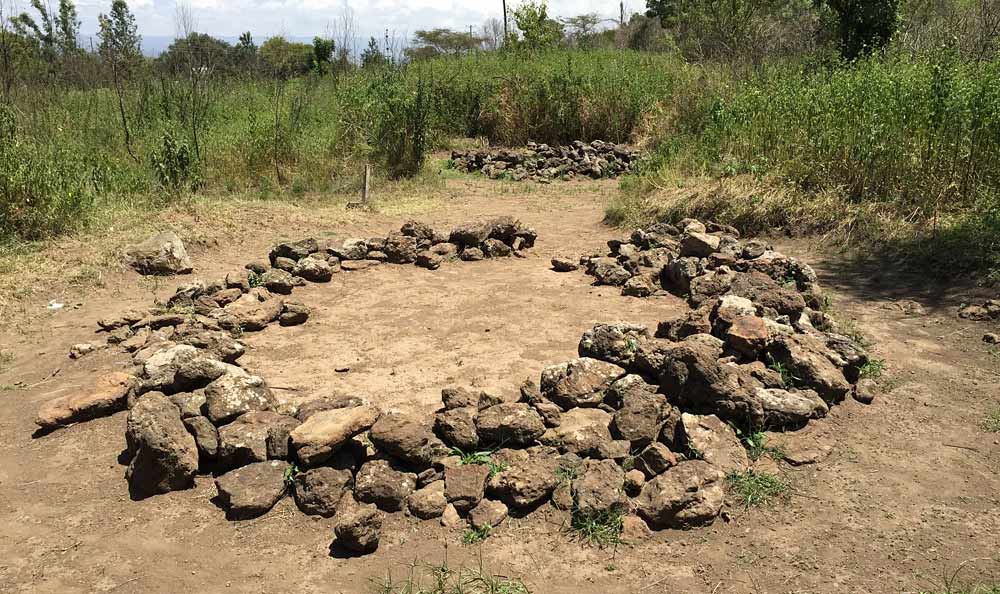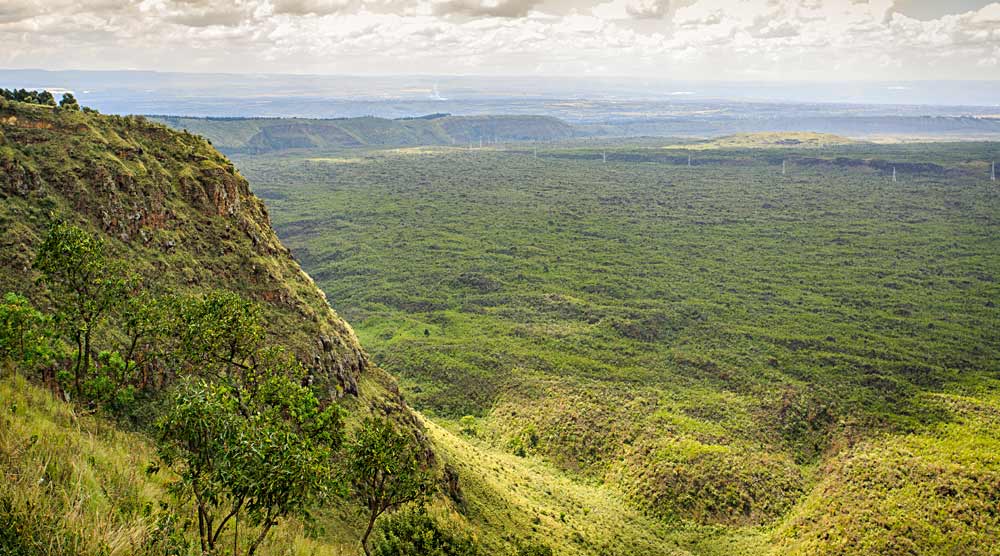In this feature we discover some of the things to see and do around Lake Nakuru, outside the National Park. Close to the Lake there are a number of interesting prehistoric sites and also one of the world’s largest volcanic calderas.
Hyrax Hill

Overlooking the lake, just 3.5kms out of Nakuru town heading in the direction of Nairobi, is the prehistoric site of Hyrax Hill. It is named after the hundreds of rock hyrax that once scampered here. This is a Neolithic seasonal settlement that goes back some 5,000-6,000 years and is liberally littered with the assorted relics of man, from hand-axes to clay pipes.
The Hyrax Hill site was discovered in 1926 by the famous palaeontologist, Louis Leakey and excavated between 1937 and 1938 by Mary Leakey. The site shows two separate areas of occupation: one from the Pastoral Neolithic and late Iron Age periods, and one from the early Iron Age.
Some of the most evocative remains that can be seen here are the ancient ‘Bao’ boards. These were carved into the rocks by our far-distant ancestors and can still be played upon today. ‘Bao’ is a board game that involves the movement of seeds or small stones around a series of hollows. The hollows represent cattle encampments (Bomas) or captured herds.
The site is open daily 9.30am to 6pm, fees are payable upon entry. Further details can be obtained from the National Museums of Kenya.
Menengai Crater

North of Lake Nakuru rise the massive grey ramparts of the Menengai Crater. The crater has a diameter of around 12 km and a depth of around 500 m. This makes it the second largest volcanic caldera in Africa. The crater was the scene of a famous battle between warring Maasai clans in the 19th century. And its eerily petrified waves of lava and towering volcanic walls are still believed to be haunted by the tormented souls of the thousands of vanquished Maasai ‘Morans’ who were hurled to their deaths from its rim.
The Crater is surrounded by lush forest of eucalyptus and acacia and is an ideal spot for hiking, nature walks and picnics. The view from the rim of Lake Nakuru and Lake Bogoria is awe-inspiring. As far as the wildlife goes, you can expect to see: tree hyrax and rock hyrax; Kirk’s dik dik; slender mongoose; black-faced vervet monkey; olive baboon; and mountain reedbuck. The bird-life is equally impressive – home to Verreaux’s eagle, lesser spotted eagle, Abyssinian ground hornbill and the African Marsh Harrier.
Getting there: Head out of Nakuru on the A104 in the direction of Nairobi. look for a road on the outskirts called, Menengai Drive. Take the fourth turning on the left off Menengai Drive (Crater Climb). Some 4.5 kms up the hill you will see a campsite followed by a telecommunications tower. Head for the tower then turn right along a path that leads through the remnants of the forest to the edge of the crater.
Entry is free and the crater is accessible during daylight hours. It is not recommended that you visit after dark or alone.
Kariandusi Prehistoric Site

The Kariandusi prehistoric site is situated further along the A104, heading out of Nakuru towards Nairobi. Discovered in 1928 by Louis Leakey, it features a museum and two excavated sites and is believed to date back to the Acheulean period (between 1.5 million and 200,000 years ago). Studies suggest that this was a prehistoric workshop rather than a place of permanent dwelling as it is strewn with stone hand axes and cleavers made from obsidian, a vitreous black volcanic rock.
The museum is open daily 8am to 6pm, fees are payable upon entry. For further information contact the National Museums of Kenya.
© 2025 Kenya Holidays
